by Ken Gargett
The Hunter Valley, a couple of hours’ drive to the north-northwest of Sydney, would probably not be the first place that anyone would plant grapes if they were starting from scratch today. It can be intolerably hot and, while rain during vintage is not compulsory, it is a regular intrusion. As is hail. And, of course, if it is not raining during any vintage, drought seems to be the other option.
What grapes excel here? Shiraz for the reds, but Shiraz excels in many parts of Australia. The warmer regions, such as McLaren Vale and the Barossa, as well as cooler climes such as central Victoria provide serious competition. Whites? Chardonnay in its own way, but the star is Semillon. Semillon? Sure, wonderful as the major component of Sauternes, but as a dry white from a warm region in Australia?
As it happens, the Hunter Valley’s Semillon is unique. It is made with alcohol around just 11 percent and does not see oak. It can be somewhat bland when young, but given time we see it transform much like the ugly duckling blossoming into the beautiful swan. Stunning wines that can age and improve for decades.
Hunter Shiraz is soft, slightly plush, gentle, elegant, and yet full of flavor. Sometimes a smidge rustic, but again a wine that can age and improve for many years. The 1965 Twin Bins 3100 and 3110 from Lindeman’s, which I recently wrote about, provided compelling evidence of that.
Indeed, they were the wines that got me thinking about revisiting the region. Those wines plus the 2018 vintage, which might just be the finest in the Hunter since ’65. And from 2018, rather than a wide collection of notes on numerous deserving wines, I am going with two of my absolute favorites – not just from the Hunter but from any region: Tyrrell’s 4 Acres and Brokenwood’s Graveyard.
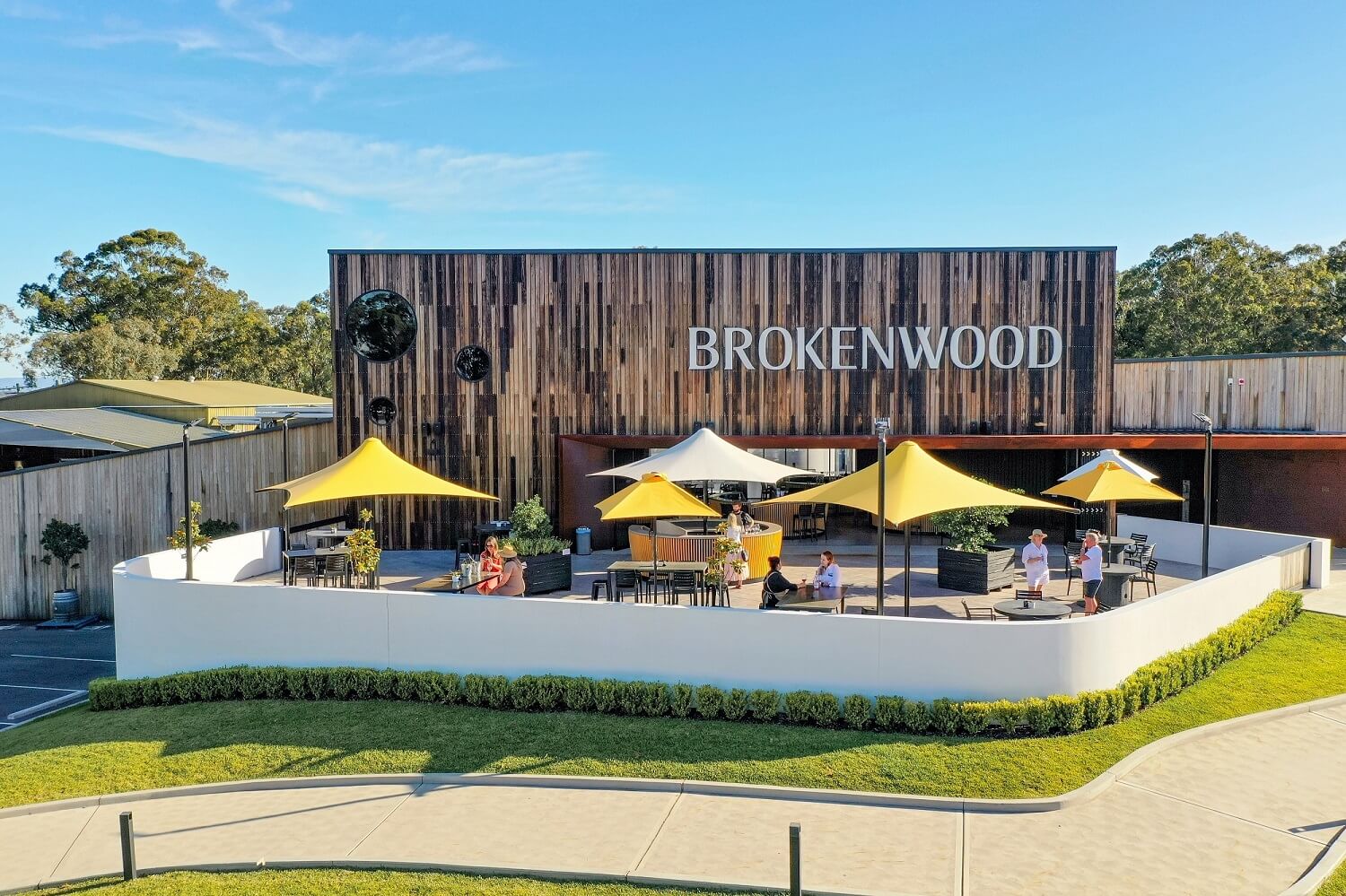
Brokenwood’s visitor center
Tyrrell’s is one of Australia’s oldest wineries. Brokenwood, by comparison, seems like the new kid on the block, but I believe that it is celebrating its fiftieth anniversary this year. One hopes it goes better than the fortieth.
I would hastily point out that the tastings and events hosted at Brokenwood’s winery in the Hunter for the fortieth-anniversary event (and let me digress slightly by saying that the newly opened facility and restaurant has very quickly become the place to go when visiting the region) went wonderfully well.
The problem was, if I may be permitted, yet another digression, an “interesting” trip from Sydney. A minicab was arranged to pick a group of us up from Sydney’s airport (including a member of this country’s wine-writing royalty, who was also one of the founding partners of Brokenwood, way back when some of us were happy with a glass of cold milk from the local kindergarten).
We were told that our driver from the Happy Cabbie company (and wasn’t that ironic) would meet us at the airport at luggage carousel 1. We headed that way and although he was nowhere near we eventually spotted him with his sign. One of our number mentioned that we were headed to luggage 1, so lucky we saw him (actually, to spot him, all we needed to do was look for someone who looked like he had just escaped from jail, the Shawshank way).
“Well, who told you to go there?”
“They were the instructions from your company,” she responded.
“Well, that might be where the company says but it is not where I wait.” Apparently our fault for not knowing that.
Our éminence grise had a few old bottles in tow he was kindly contributing to the tastings, and we needed to wait until they cleared the special luggage area. Our driver, who we had dubbed Basil, was not happy at not departing immediately.
I attempted a little idle small talk to fill the awkward silence as we waited. I was aware that there was another bus later, so I asked if he knew who was going on that one.
“No.” This is going well. “Well, it is in my folder but I’m not going to look.”
“Okay then.”
Finally, we headed off. Everyone had gear but no help was offered. Our one female was drowning under stuff.
We asked if we could stop somewhere as none of us had had lunch, and some had had no breakfast.
Yes, he’ll stop on the way. A good spot was suggested. “No, not stopping there.”
Okay.
Halfway up, we headed off the main road to a spot – turned out so he could pick up his wife and give her a lift. We filed out and he said, “You got five minutes.” It was a dire place and, seriously, I was expecting banjo music any moment.
We mentioned we intended to order some food, so we checked if we could eat on the minibus.
“No.”
“Okay, we may be a little bit longer than five minutes then.”
“You got five minutes.”
Which we, of course, ignored.
The choice was Subway or KFC. For no particular reason, probably because it was closer, we went to Subway. And there, at the counter ordering food, was a bloke in a McDonalds uniform. I kid you not. We ordered, sat down, but in charged Basil and insisted we go. We made it clear we’ll be finishing. He was not going to wait so a compromise was reached, and we could finish eating on the bus – presumably, arriving sans passengers is not considered a good look in transport circles.
We got to the bus and he said, wife strewn across the front seat, looking like she had just had the conjugal visit she’d been so long denied and discovered it was not all she hoped, “I want $57 from each of you.”
We pointed out that it had all been organized at his office and paid for by Brokenwood.
“I’m not going another inch till you each give me $57.”
We were not moving and not paying him.
Eventually, he agreed to ring his office.
We assume that his apology was when he slammed the door and started driving again without a word. Before long, he tried it again. Same result, although someone did ask how much he charged his wife for the lift. One of our number had a real job as an extremely senior detective who spent years dealing with various gangland wars and murders. He finally had enough. Despite the fact that Basil was a good foot taller than him, Basil was placed firmly against the van and the riot act was read.
Basil appeared truly stunned that there could be any question as to the high level of personal service he had been providing. Suffice it to say that neither Basil nor the Happy Cabbie company was seen for the return journey a few days later. I’ll confess I have rarely laughed as much as I did on that trip.
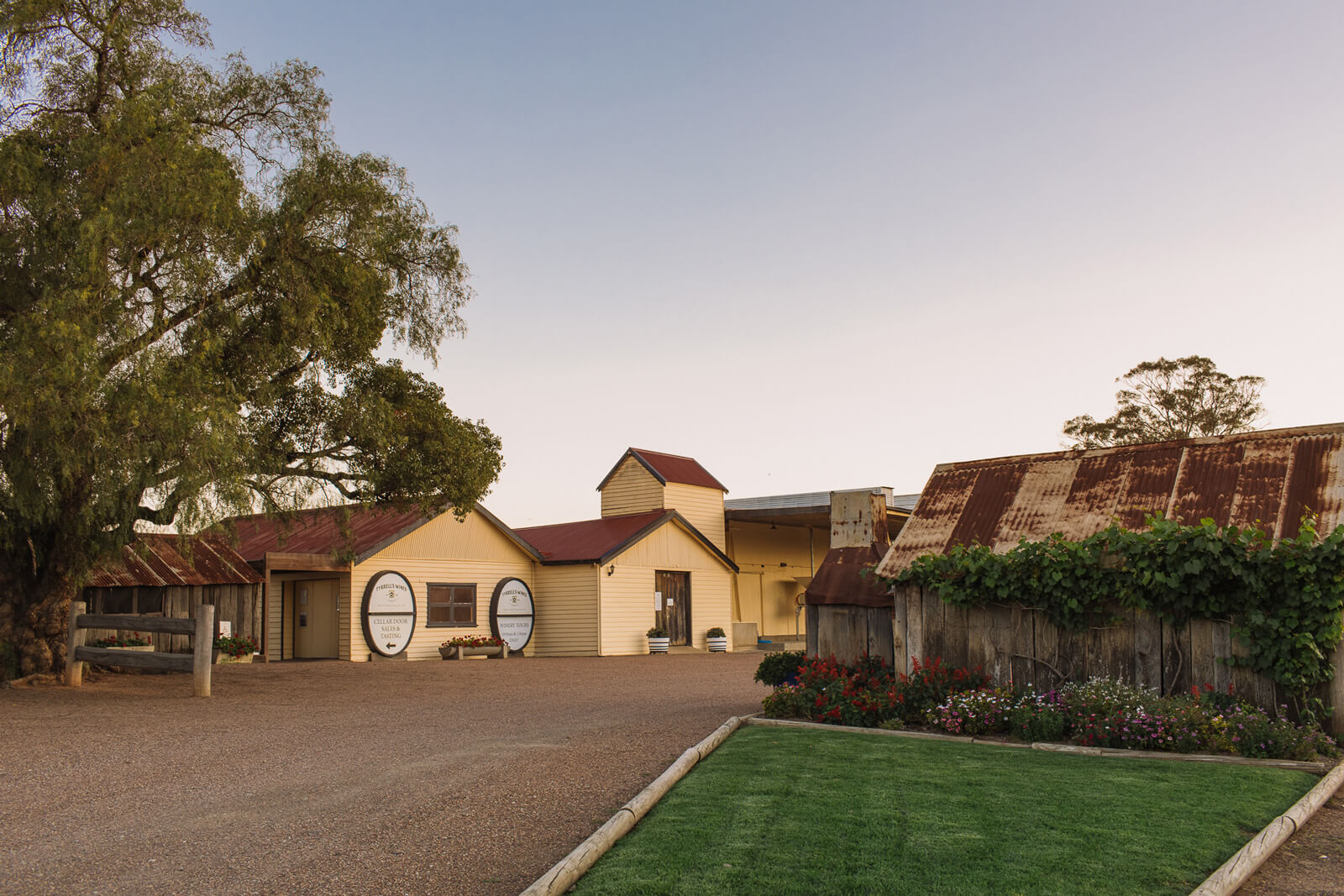
Tyrrell’s Cellar Door and Old Hut
Tyrrell’s history
Tyrrell’s began when Edward Tyrrell took up a concessional allotment of 320 acres of Hunter Valley land in 1858, several years after he had arrived from England. He planted Shiraz and Semillon although they were more likely known as Hermitage and Shepherd’s Riesling respectively in those days. His first harvest was 1864. Edward had ten children, and the eldest of them, Dan, took over in 1889 at just 18. He went on to oversee an extraordinary 69 vintages.
Dan’s nephew, the legendary Murray, took over in 1959, revolutionizing the operation. He emphasized tasting visits, bringing in customers, and ensuring their loyalty. Murray also established Australia’s first mail-order wine club and created what is known as the Private Bin system, where grapes harvested from Tyrrell’s best vineyards were matured in individual oak barrels with the wines then named after those vats.
Hence, we have Vat 1 Semillon (almost 5,500 medals and more than 330 trophies gives an indication of just how good Hunter Semillon, and this wine in particular, can be); Vat 47 Chardonnay; Vats 5 and 9 Shiraz; and more.
Murray’s son, Bruce, joined the business in 1974 and took over in 2000. Today, he is ably assisted by his own son, Chris. Chief winemaker Andrew Spinaze has been with them since 1980.
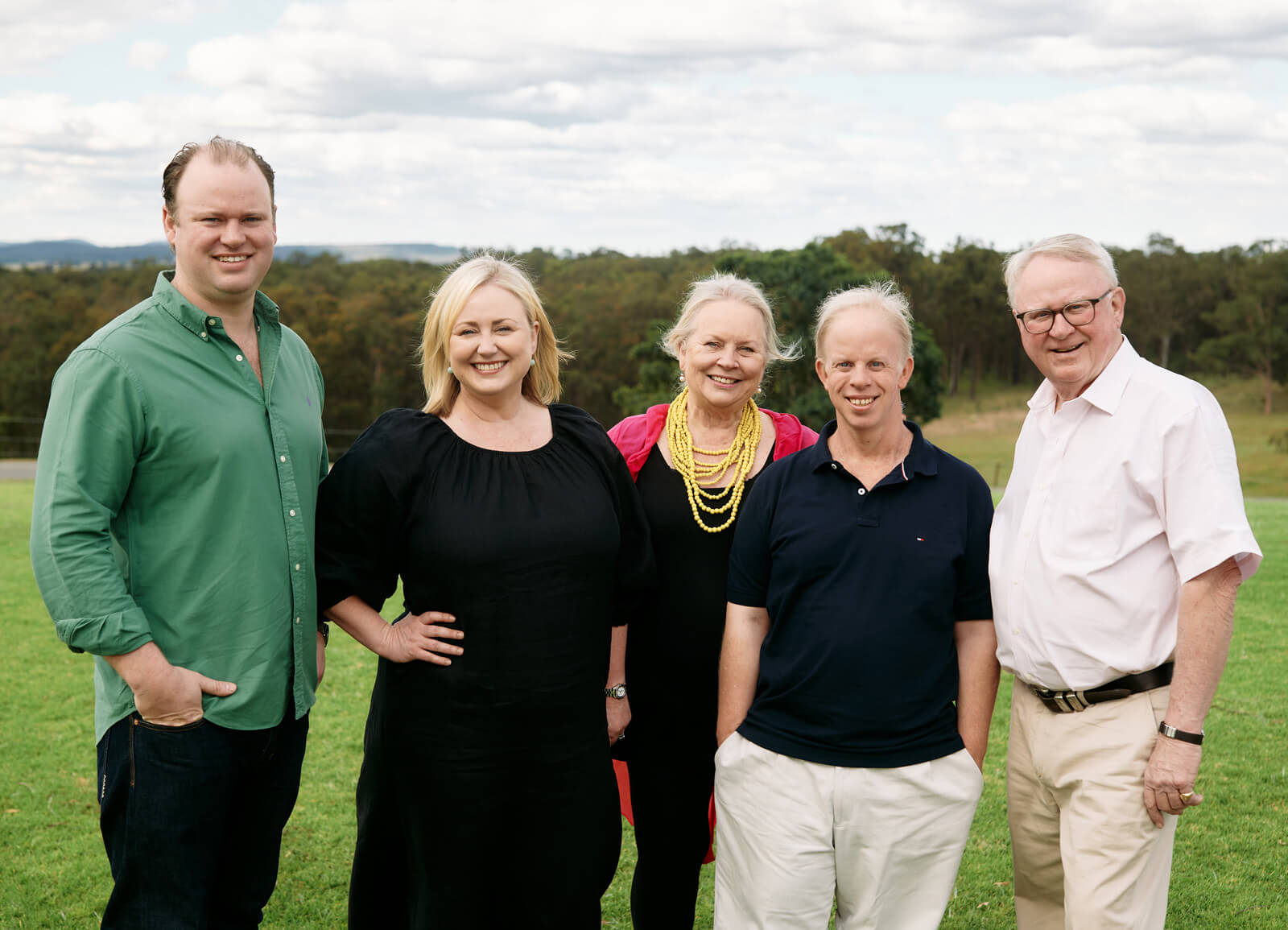
The Tyrrell family in the Hunter Valley
In 1983, to celebrate 125 years of winemaking, Tyrrell’s released not only the famous 1976 Pinot Noir that won the 1979 inaugural “Olympics of Wine” in Paris, organized by French food and wine magazine Gault-Millau (always controversial, a Hunter Pinot?), but also the 1979 Anniversary Hermitage (Hermitage was still in vogue then as the name for Shiraz, but not permitted now), which came from Tyrrell’s 4 Acres vineyard (visitors to Tyrrell’s will have passed it on the way up the drive). This was, to my knowledge, the first specific release from that vineyard.
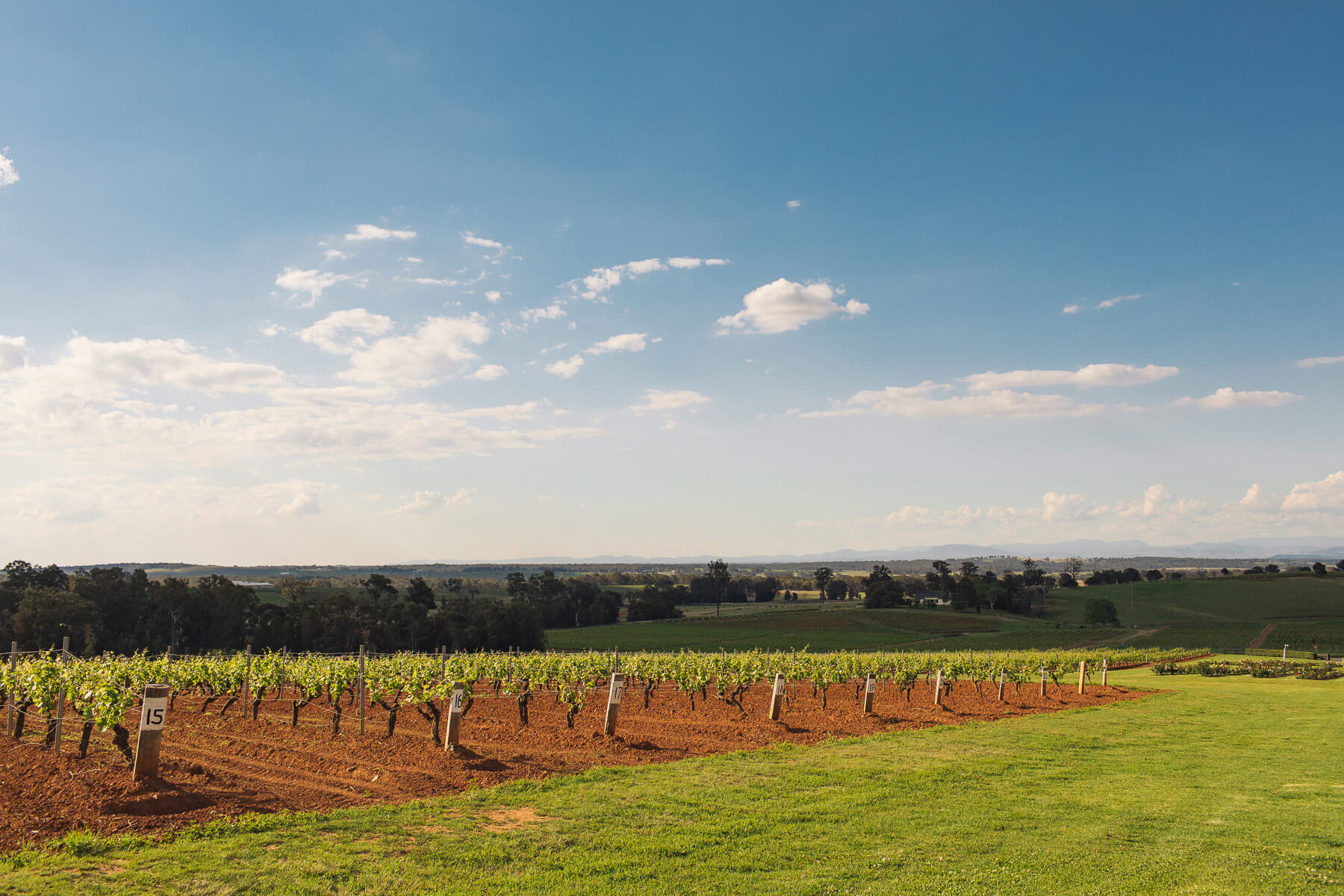
Tyrrell’s 4 Acres vineyard in the Hunter Valley
Despite being named 4 Acres Vineyard (4 acres = 1.6 hectares), it contains just 1.05 hectares of Shiraz, planted in 1879 by Edward Tyrrell, meaning a very limited production. There was more, but in 1964 the company retired its draft horses, which meant “cultivation by tractor” and so every second row was removed (so same area, just half the production).
There is also some Pinot Noir as well, but for our purposes it is these wonderful old Shiraz vines on which we focus. This vineyard is part of the Sacred Sites program. Until the introduction of 4 Acres Shiraz, the grapes were used as part of Vat 9.
Allow me to intrude with a quick word on vintages. The Hunter can suffer from less-than-stellar vintages. This is not Margaret River where every year is simply a variation on the theme of perfection, or so it seems.
However, the Hunter Valley recently saw three absolute crackers: 2017, 2018, and 2019. For reds, 2018 seems to be universally accepted as the pinnacle, and it may well be the best vintage since 1965. Put simply, you cannot have too many 2018 Hunter reds in your cellar.
Tyrrell’s has a number of reds that are of the highest caliber – Vat 9, Old Patch, and Old Hillside among them – but this is the wine that always captures my imagination. It is not made very often – 2007, 2011, and 2014 were three early offerings – but when it is, and you find it, do not hesitate. The 2018 has been followed by 2019, another stellar year.
Tyrrell’s tasting notes
4 Acres Shiraz 2018 (AUD$165) – There is usually a small percentage of whole bunches included in this wine, which sees natural fermentation, before spending 14 months in a single, large, older oak cask (2,400 liters).
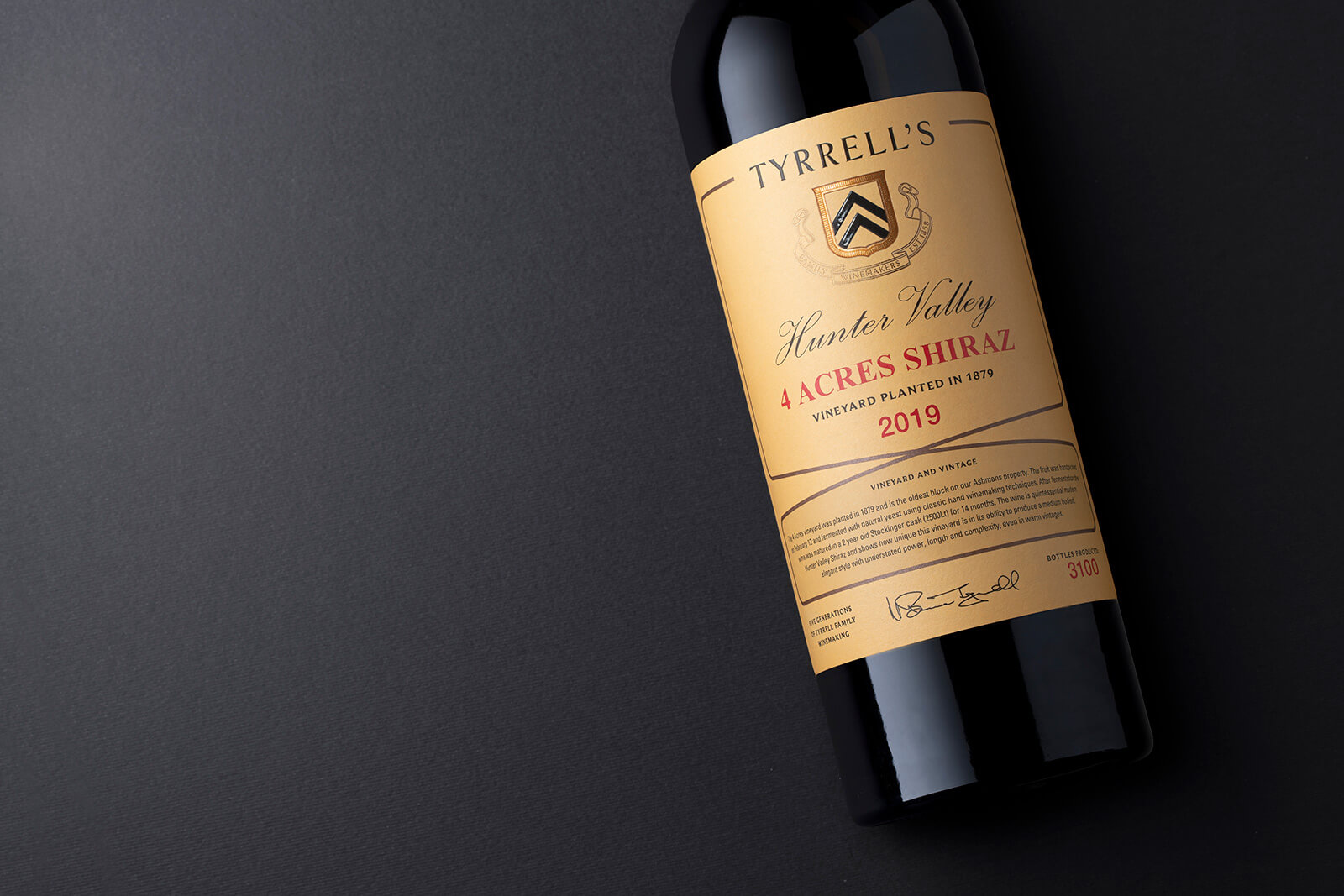
Tyrrell’s 4 Acres Shiraz 2019
A glorious nose. Mulberries, lingonberries, dark fruits, plums, spices, tobacco leaves. A wine with immaculate balance, a soft and supple texture and the silkiest of tannins. Ethereal. There is both depth of flavor and serious complexity here. Great length. A wine of poise and grace and one that will undoubtedly give many years of pleasure. 98.
Brokenwood history
Brokenwood was established in 1970 by three wine-obsessed Sydney solicitors (lawyers for those from different regimes) – James Halliday, Tony Albert, and John Beeston. Both Beeston and especially Halliday went on to write extensively about wine. They paid $970/acre for a ten-acre block, a record at the time. One of Australia’s first boutique wineries, the first vintage was 1973, and despite claims from the trio not to have any idea of viticulture it was soon a raging success.
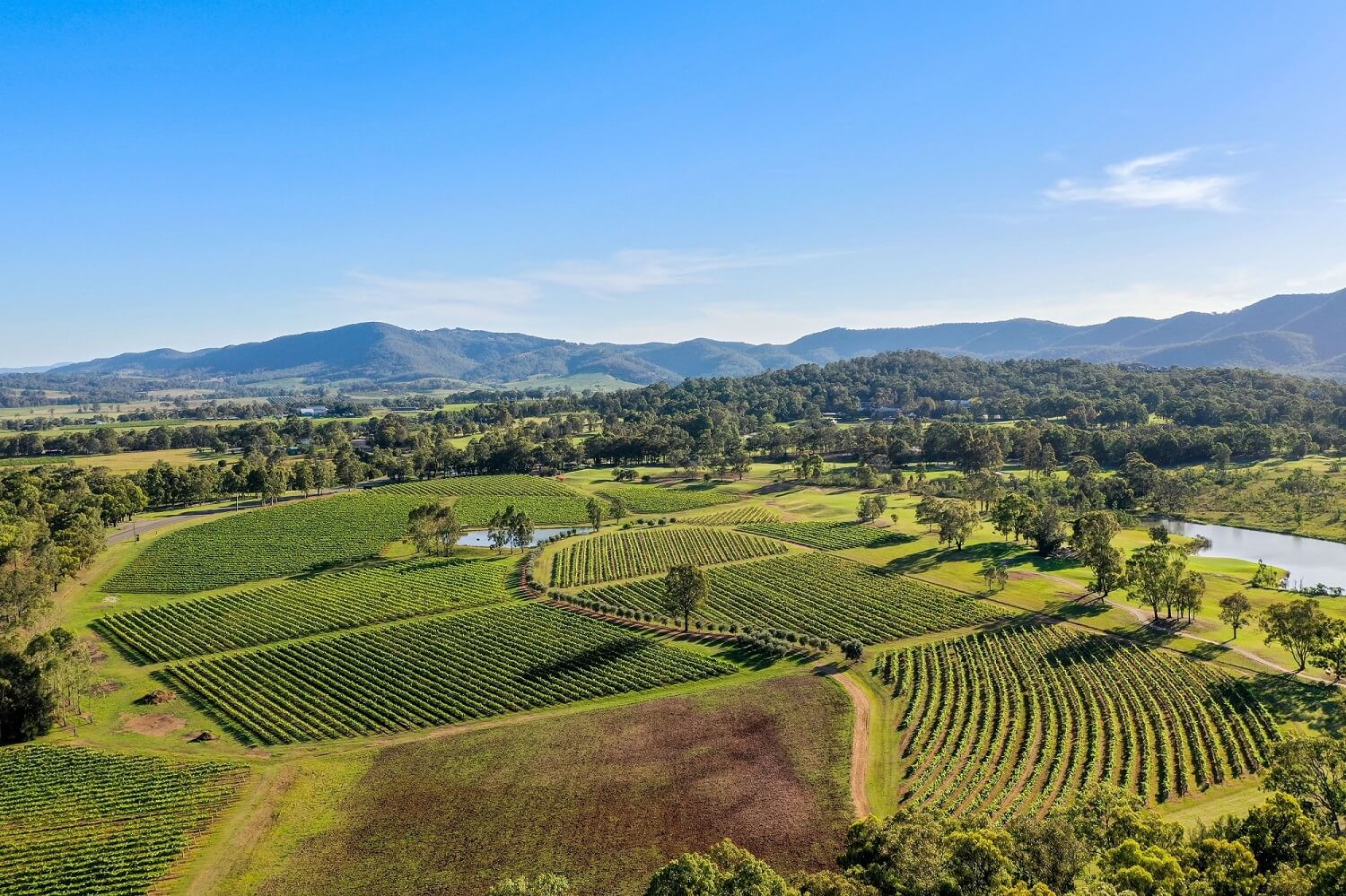
Brokenwood Graveyard vineyard
Wanting to expand the white range, in 1982 they employed a young up and comer, Iain Riggs, as winemaker, CEO, bottlewasher, and everything else. Riggsy, as he is known, retired a year or so ago (although one suspects that he won’t be found too far from his beloved winery), having influenced the Australian wine industry in more ways than we will probably ever know.
There is hardly an honor he has not won (earned might be a better word), including the Women in Wine Award – I still have no idea how he managed that – and he is a recipient of the Order of Australia.
He has mentored an extraordinary number of young winemakers, who can now be found all through Australia and New Zealand as well as further offshore. He also leaves a legacy of wonderful wines, not least the Graveyard, a single vineyard Shiraz first made in 1983, although it was not named that for the first release. Graveyard would not appear on a label until the 1984 vintage.
All manner of stories, some more than likely apocryphal, have emerged from the early days.
This was a place where people worked hard (sometimes) and played even harder. Friends often came up for the weekend to assist, and on one occasion local legend Len Evans was seen delivering grapes from the vineyard to the winery in his Bentley.
While most worked hard when they had to, partner Tony Albert was not known for his affinity with manual labor, hailing from one of Sydney’s more affluent families. It is alleged that on one occasion it was his turn to man the cellar door for the weekend. He grabbed hold of newly arrived Iain Riggs and asked what the cellar door usually took over a weekend. In those days, as Riggsy advised him, it was around the not inconsiderable sum of $2,000. Albert immediately pulled out his checkbook, signed a check for that amount, shut the doors, and took off, not to be seen again that weekend.
A lot of fun was had as well. One story sees a young, not-to-be-named Romeo who arrived for a weekend in the early days of Brokenwood with his very attractive Juliet, horrified to discover that the sleeping quarters were what you might call communal.
Not to be deterred after the lights went out, every half hour, like clockwork, there was much huffing and puffing from his corner. This continued long into the night and finally the rest of the party was so impressed that it could restrain itself no longer and switched on the lights to share in our Lothario’s epic performance only to find him re-inflating his airbed, which had sprung a leak and emptied itself every 30 minutes.
It seems Juliet had found Romeo a little tiresome and headed for Sydney many hours earlier.
Why Graveyard? The site was originally intended to act as the local cemetery for Pokolbin. I doubt anyone would argue that it found a much higher purpose as a vineyard of the highest caliber.
It is a 15-hectare vineyard with numerous blocks designated within: Pa’s, 7 Acre, Bush, Duck’s, Road, Middle, End, Kat’s and Dog’s, State of Origin, Vegas, and Trees. I’m always surprised that they named part of it “State of Origin.”
State of Origin is the name of the annual rugby league battle between the state of New South Wales (where the Hunter is located) and Queensland to the north – the sporting highlight of the year for many. Despite having a fraction of players from which to choose and suffering underdog status every year, time after time the Queenslanders give their southern compatriots a walloping. Quite why New South Wales would wish to remind itself of that, I’m not sure.
Regular readers will be aware of my view of the great 1965 twin bis from Lindeman’s, two monumental Shiraz. I’ve long believed that the only Hunter red I have tasted since then that might challenge them is the 1986 Brokenwood Graveyard. A true superstar.
With the 2018 Graveyard, we might just have found another; 2019 will be released in May 2021. Only a whisker short of the ’18, I fear it might forever live in its shadow. That said, grab as much of either as you can find. Another incentive? There will be no 2020 Graveyard.
Brokenwood tasting notes
Brokenwood Graveyard 2018 (AUD$350) – The wine sees a three-day cold soak and then four to five days’ fermenting at 24-26°C. 100 percent French oak, none of it new.
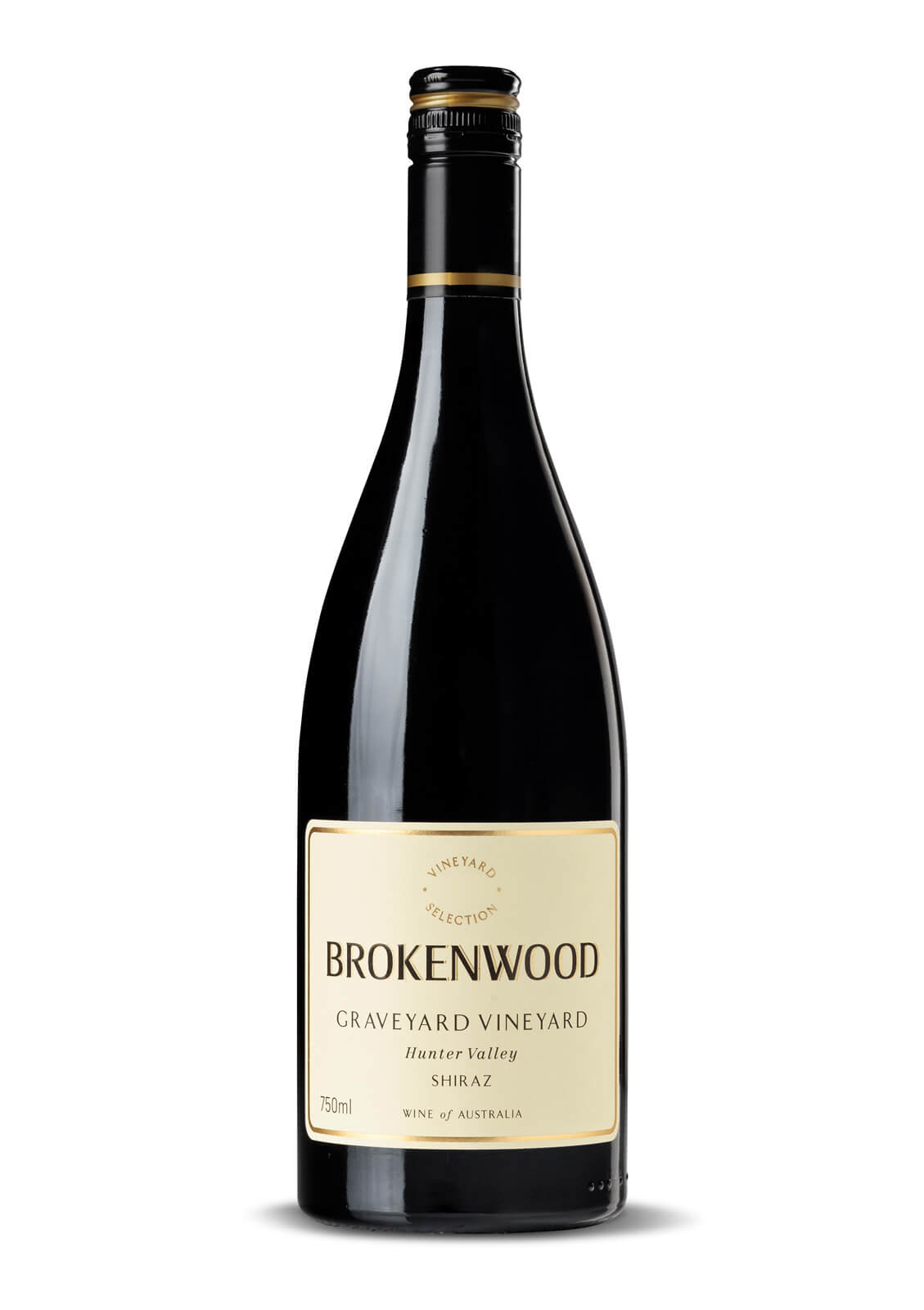
Brokenwood Graveyard Vineyard Shiraz
Monumental. A wonderful wine. Will not be easy to find but at this price a real bargain compared to what one has to pay for the great First Growths and Grand Cru Burgundies these days. Young, obviously. Ripe and plush, with 2018’s trademark finesse and tannin management.
Chocolate, dark berries, warm earth, and more – the flavors just keep coming. Complex, balanced, good grip. It needs at least a decade but is so gorgeous now, how does one resist? Focused, with great length and the intensity maintained throughout, beautiful tannins, knife-edge balance. A stunning wine. One of the great Graveyards. 99.

Stuart Hordern, Brokenwood Graveyard winemaker
Brokenwood Graveyard 2019 (AUD$350) – Few wines have had a harder act to follow than this one on the heels of the stupendous 2018, but has given it a red-hot go. Tight and youthful with firm tannins. Flavors of chocolate, plums, dry herbs, black fruits, fresh leather. It doesn’t quite have the almost-unique combination of exuberance and finesse the 2018 exhibits, but it has other charms. It would be fair to suggest that this is more typically Graveyard in character than the ’18. Complexity and length and a cracking future. Backed by juicy acidity. 98.
For more information, please visit tyrrells.com.au and brokenwood.com.au.
You may also enjoy:
Penfolds Bin 60A 1962: Australia’s Greatest Wine Ever (Or Certainly A Serious Contender)
Leave a Reply
Want to join the discussion?Feel free to contribute!





















































You might have mentioned the shindig organised by Brokenwood every time they do launch a Graveyard. Memorable, incredibly enjoyable, with most excellent French food and far too much money spent on excellent wines….
Thanks, Alex. Yes, a cracking day. Great fun and great wines. I have a feeling that the Lunch might actually be this weekend?
The problem is that if I mention everything, I’d be writing ‘War & Peace.’